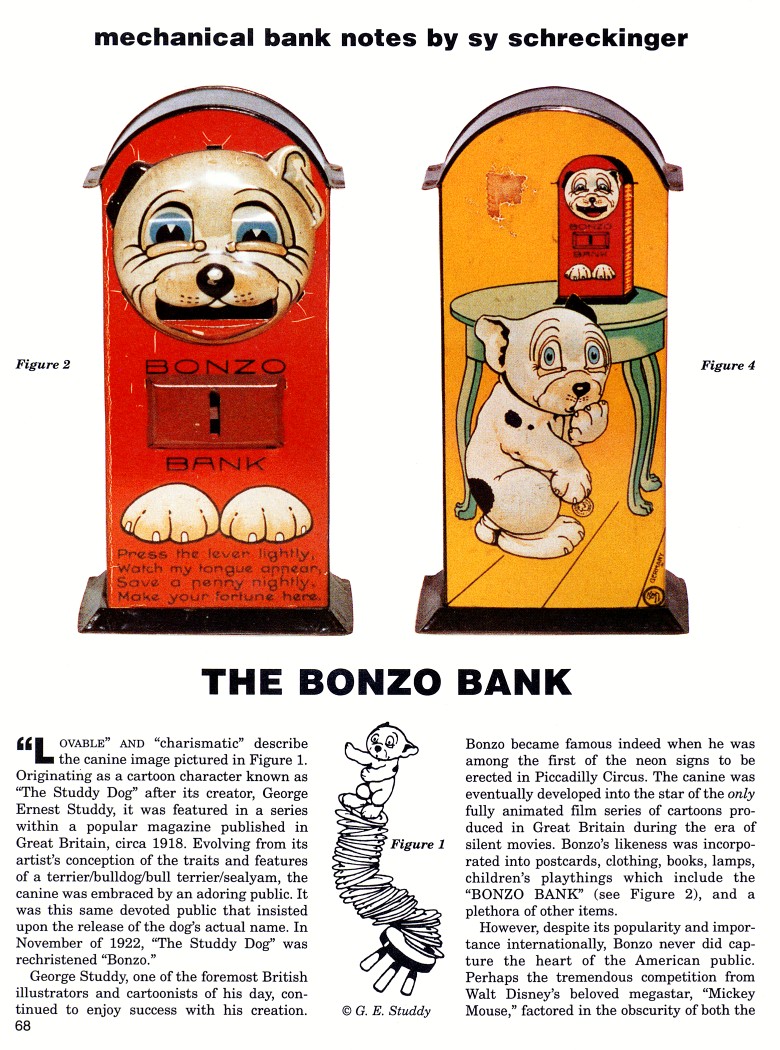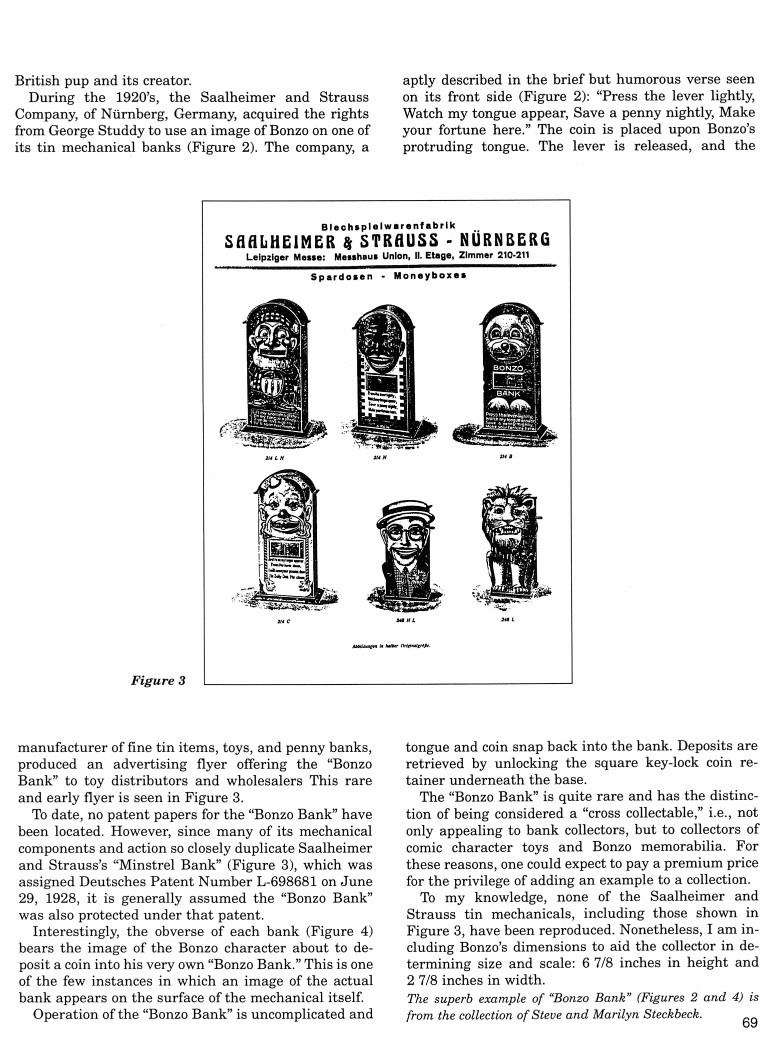|
The Bonzo Bank
by Sy Schreckinger – ANTIQUE TOY WORLD Magazine – August, 1997
“Lovable” and "charismatic" describe the canine
image pictured in Figure 1. Originating as a cartoon character known as
"The Studdy Dog" after its creator, George Ernest Studdy, it was featured
in a series within a popular magazine published in Great Britain, circa
1918. Evolving from its artist's conception of the traits and features of
a terrier/bulldog/bull terrier/sealyam, the canine was embraced by an
adoring public. It was this same devoted public that insisted upon the
release of the dog's actual name. In November of 1922, "The Studdy Dog"
was rechristened "Bonzo."
George Studdy, one of the foremost British illustrators and
cartoonists of his day, continued to enjoy success with his creation.
Bonzo became famous indeed when he was among the first of the neon signs
to be erected in Piccadilly Circus. The canine was eventually developed
into the star of the only fully animated film series of cartoons produced
in Great Britain during the era of silent movies. Bonzo's likeness was
incorporated into postcards, clothing, books, lamps, children's playthings
which include the "BONZO BANK" (see Figure 2), and a plethora of other
items.
However, despite its popularity and importance internationally, Bonzo
never did capture the heart of the American public. Perhaps the tremendous
competition from Walt Disney's beloved megastar, "Mickey Mouse," factored
in the obscurity of both the British pup and its creator.
During the 1920's, the Saalheimer and Strauss Company, of Nurnberg,
Germany, acquired the rights from George Studdy to use an image of Bonzo
on one of its tin mechanical banks (Figure 2). The company, a manufacturer
of fine tin items, toys, and penny banks, produced an advertising flyer
offering the "Bonzo Bank" to toy distributors and wholesalers This rare
and early flyer is seen in Figure 3.
To date, no patent papers for the "Bonzo Bank" have been located.
However, since many of its mechanical components and action so closely
duplicate Saalheimer and Strauss's "Minstrel Bank" (Figure 3), which was
assigned Deutsches Patent Number L-698681 on June 29, 1928, it is
generally assumed the "Bonzo Bank" was also protected under that patent.
Interestingly, the obverse of each bank (Figure 4) bears the image of
the Bonzo character about to deposit a coin into his very own "Bonzo
Bank." This is one of the few instances in which an image of the actual
bank appears on the surface of the mechanical itself.
Operation of the "Bonzo Bank" is uncomplicated and aptly described in
the brief but humorous verse seen on its front side (Figure 2): "Press the
lever lightly, Watch my tongue appear, Save a penny nightly, Make your
fortune here." The coin is placed upon Bonzo's protruding tongue. The
lever is released, and the tongue and coin snap back into the bank.
Deposits are retrieved by unlocking the square key-lock coin retainer
underneath the base.
The "Bonzo Bank" is quite rare and has the distinction of being
considered a "cross collectable," i.e., not only appealing to bank
collectors, but to collectors of comic character toys and Bonzo
memorabilia. For these reasons, one could expect to pay a premium price
for the privilege of adding an example to a collection.
To my knowledge, none of the Saalheimer and Strauss tin mechanicals,
including those shown in Figure 3, have been reproduced. Nonetheless, I am
including Bonzo's dimensions to aid the collector in determining size and
scale: 6-7/8 inches in height and 2-7/8 inches in width.
The superb example of "Bonzo Bank" (Figures 2 and 4) is from the
collection of Steve and Marilyn Steckbeck.
|


